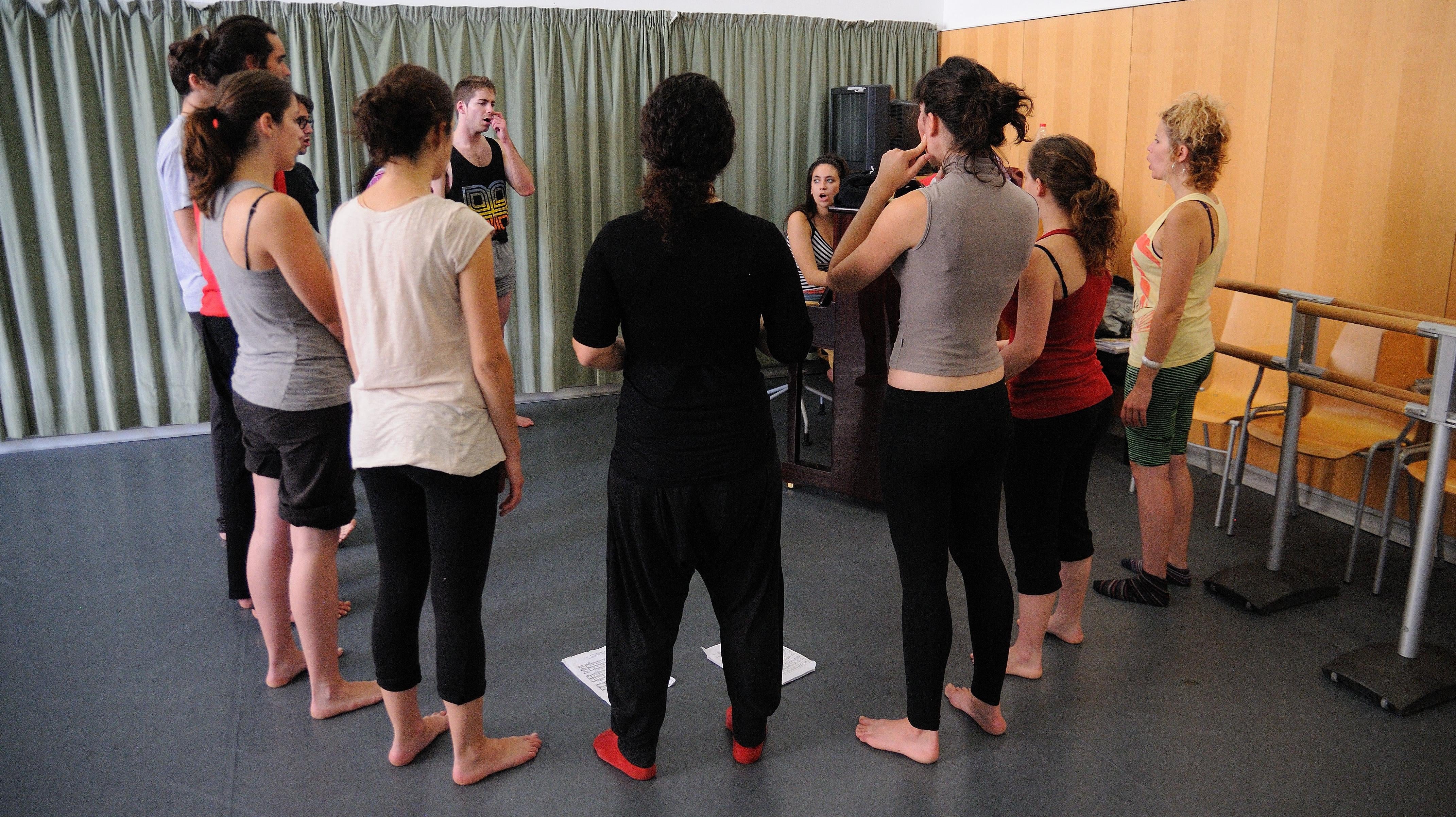Everything comes with a price. Pursuing a creative or artistic life often means you can sleep in, dress in weird clothes, and avoid sitting in cubicle like a square. On the other hand, it also means you don’t earn that sweet, sweet cubicle-drone-money. You probably also have to support your fiction writing/podcasting/painting/etc. with a service industry job and side hustle or four.
Creative folks don’t have to be a broke-arse baristas though. The 11 gigs listed here run the gamut from lucrative, serious careers, to “maybe-it-would work” side gigs, but all of them are interesting, non-standard jobs that will allow your creative side to shine.
Intimacy coordinator

If you want to work in film, television, or theatre production, there are (many) worse jobs than intimacy coordinator. This relatively new position involves facilitating any scenes that involve physical intimacy — from kissing to sex — working as liaison between the director and producers and actors, making sure everyone consents to everything, and consulting with directors about how to achieved their vision.
Productions with big enough budgets to employ intimacy coordinators take it very seriously: In order to be hired, you must be certified through programs approved by SAG-AFTRA (the actor’s union) and pass a background check, but your biggest hurdle will likely be getting hired in the first place. Hollywood is about who you know, so people skills and a background in production are soft requirements, plus you’ll have to be well-versed in the intricacies of how these kinds of scenes are produced.
Many intimacy coordinators come from acting backgrounds, as actors understand the power dynamics and expectations of the performers. Some make a lateral move from fight choreography, an oddly analgous skillset when you consider the importance of careful choreography. Once you’ve managed to jump through all these hoops, you can expect to be paid between $US1,100 ($1,527) and $US1,450 ($2,013) per day doing it. Check out the Intimacy Professionals Association for more information.
Food stylist

Food stylists are the reason the burgers in commercials look so much more appetizing than the sad patties they sell at the drive-through. Part sculptor, part chef, and part engineer, food styling is a great career choice for people with a talent for the visual arts and extreme attention to detail.
Many food stylists owe their careers to truth in advertising laws: Ads are generally legally prohibited from showing fake versions of the food they’re selling, but most foods looks gross on camera. So food stylists take actual food and present it as mouthwateringly as possible using any number of tricks-of-the-trade, up to and including meticulously affixing every single sesame seed on the bun by hand. Food styling where truth in advertising laws don’t apply, like an editorial photo in a magazine or the big dinner scene in a movie, often uses fake food that looks better-than-real on camera.
To get started in the field, you have to first understand food intimately through being a killer chef, so go to culinary school. Then, apprentice with an established food stylist, maybe get hired as assistant, build up your portfolio, and work your way up.
Tourist guide

If you have a flair for performing; an interest in travel, art, architecture or history; and you genuinely like other people, consider becoming a tourist guide. Unlike many of the professions on this list, showing tourists around or answering questions about museum exhibits often isn’t an exceedingly difficult job to get, nor does it usually require an advanced degree. Getting the job could be easy as showing up and asking, or it could require an extensive amount of specialised knowledge and expertise — think of the guy running a local “ghost tour” versus the guy helping rich people climb Mount Everest.
Many locations around the world don’t require any kind of certification to guide tourists, but some places require a licence, and some countries require extensive training. The downside of the ease of hiring for tour guides is the salary: According to salary.com, tour guides generally earn between $US25 ($35) and $US49k per year with a median salary of around $US38,000 ($52,752) — and that’s in a major city.
Wedding dance choreographer

Teaching clumsy couples to make an impressive showing at their wedding reception probably wasn’t what you had in mind when you were studying ballet, but it’s a living. Most couples pay for lessons at dance studios, so you’ll need a solid background in dance to be hired as an instructor, and wedding lessons probably won’t be the only lessons you give. The soft skills required include managing the expectations of your students and crafting routines that are tailored to a given couple’s skill level. Dance instructor salaries average hover around $US30 ($42) an hour, depending on where you live.
Furry artist
If you’re talented with visual art and you don’t mind walking on the strange side of the street, becoming a furry artist might be a viable career path. People into the furry fandom subculture love anthropomorphic animals so much, many of them pay artists to create images of the humanized animals of their dreams — -their “fursonas,” in furry parlance. These can range from G-rated to XXX-rated, and can vary in style from cartoons to photo realism — it’s all up to the clients.
There’s obviously no formal career track for this kind of work, so you don’t need a degree or any special training. You do need to be hooked into the furry community and have the skills to produce the kinds of art they’d like. The most sought-after furry artists supposedly earn up to $US200 ($278) an hour for their work, but the average commission works out to about $US10 ($14) an hour. So less than Starbucks, but more than the federal minimum wage, and you get to indulge your passion.
Corporate improv instructor

Improv comedy is awesome, but it’s not the most viable career path — Who’s Line is it Anyway? isn’t even being made any more. But surprisingly, many improv comedians teach workshops to corporate clients as one of their side-gigs. It might seem a little ridiculous at first, but the skills improvers develop — instant creativity, trust in initial impulses, fearlessness — are useful in all kinds of lines of work, plus training cubicle drones in comedy is way more lucrative than that Learning Annex class you were thinking of starting.
The business is so lucrative that the 363 kg-gorillas of live comedy, The Groundlings, have their own corporate-education service offering training in team-building, leadership, public speaking, and more. It ain’t cheap.
Figure modelling

Very few of us are genetically perfect enough to be fashion or fitness models, but just about anybody can get work as an artist’s model. The job generally entails posing for art students — that is, standing still while aspiring Rembrandts represent your form. You don’t need any formal training or degree to pose for artists, nor do you need to be any specific weight or age, as it’s not about being attractive, it’s about being a visual reference for artists-in-training. You’ll need to be able to hold a pose for long enough to be painted, sketched, sculpted, or drawn, and you can’t be shy: You’ll often be posing nude or partially dressed, so you have to be cool with that.
To get the job, you can apply online, or contact a local arts college and ask around. You could even put together a portfolio of poses to show that you’re serious. You might make around $US50 ($69) an hour, but it’s not likely that you’ll be working full time.
Foley artist

While many of the sounds added to films and television in post production are from libraries, sometimes you need something specific, and that’s where the foley artist comes in. Their job is to create sounds that so perfectly fit with what’s going on onscreen that audience members will never consider they aren’t hearing the “real” thing. From clapping coconuts together to mimic the sounds of a horse galloping to frying bacon to create the sound of a rainstorm, foley artists use creativity and killer ears to create seamless movie magic.
It’s not an easy field to get into — there aren’t many foley artists, and people tend to stick with the people they know — so the best chance is apprenticing for an established foley guy, or trying to get unpaid work on smaller productions. Having a background in recording or sound engineering is extremely helpful.
Face-painting

We’ve all seen those booths where kids can get their faces painted at the fair. If you have a talent for art, it could be a surprisingly lucrative side-hustle — an independent face-painter might charge up to $US100 ($139) an hour to ply their trade at parties, events, and festivals, and the only expenses are the materials (and the potential emotional consequences of dealing with a bunch of rowdy, cake-buzzed kids all day). Face-decoration is a specialised field, so to get started you’ll probably need some training from an established face-painter. From there, it’s the old challenge of finding someone to hire you. You can improve the odds by putting together a killer portfolio of your work and practicing often.
Online dating profile writer/photographer

Apparently, freelance writers and photographers looking for bucks have been finding some in the world of online dating. Creatively, it’s an interesting challenge. You’d have to get to know the subject well enough to “sell” them on often crowded dating sites, whether that’s through scintillating prose or evocative photos, all while writing in their voice instead of your own. It’s more interesting than technical writing anyway. It’s hard to get a handle on how widely these kinds of services are used and how much people pay, though. But with an estimated 323 million people using online dating services, some of them have to be interested in hiring you.
Santa Claus

The world of professional Santas is wild. Every year, an army of St. Nicks are hired to work in malls, attend Christmas parties, and star in seasonal television productions all over the world. You can be one of them — if you can convincingly convey BSE (big Santa energy). That generally means being able to establish a rapport with children, having a clean record, and the acting chops to perform for hours at a time. You’ll also need a big, white, fluffy beard, a large belly, a jolly disposition, and a killer costume — Santas are often expected to bring their own wardrobe.
You could take a class to learn Santa skills, but you don’t have to. If you want to move up the Santa ranks, you could start a social media campaign, like this Santa who has 4.5 million followers on TikTok.

Leave a Reply
You must be logged in to post a comment.